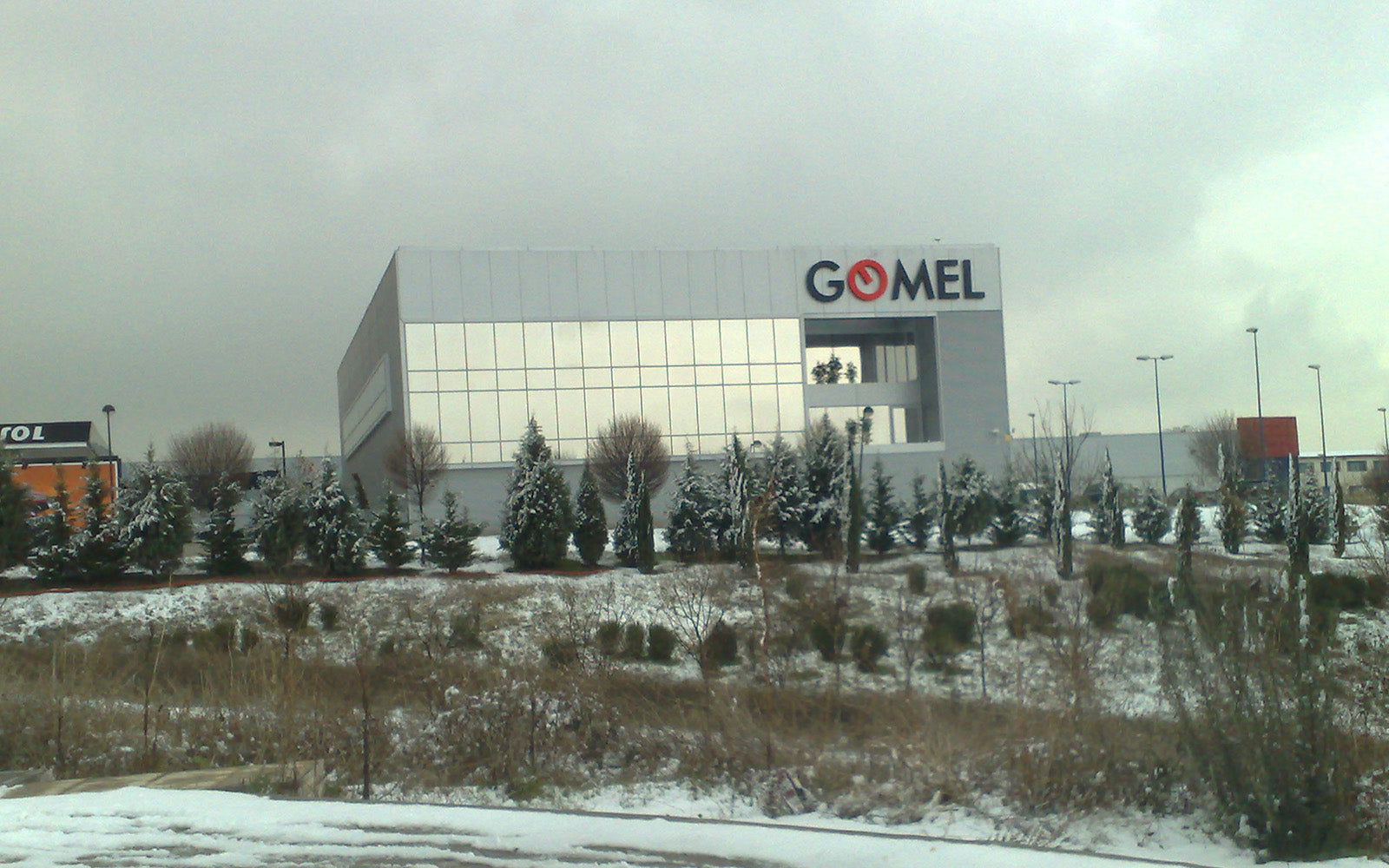
Gomel 2000
The GOMEL studios are made up of two floors and a basement. The problem raised was the elimination of noise coming from the studio on the 2nd floor to the studio on the 1st floor. On the 2nd floor, new decorations are usually installed, which produces a serious noise transmission problem (screwdrivers, nails, knocks, etc.).

Since audio recordings are made at the same time as video shooting, very low background levels are required. For all these reasons, a maximum transmitted noise of 22 dB was imposed as a condition. The study room to be treated is an open plan of 680 m2 (without pillars) with large openings between support beams.
 As an ambivalent solution (improvement of impact noise and airborne noise insulation), a multi-layer floating floor composed of springs supported on an elastomer sheet forming an air chamber filled with absorbent material was designed and executed, on which a water-repellent DM formwork was applied. plus a blanket of anti-impact material, polyethylene sheet and 8 cm compression layer with a double sheet finish (1 + 1 cm) of wood chipboard for the correct anchoring of decorations.
As an ambivalent solution (improvement of impact noise and airborne noise insulation), a multi-layer floating floor composed of springs supported on an elastomer sheet forming an air chamber filled with absorbent material was designed and executed, on which a water-repellent DM formwork was applied. plus a blanket of anti-impact material, polyethylene sheet and 8 cm compression layer with a double sheet finish (1 + 1 cm) of wood chipboard for the correct anchoring of decorations. 
The results obtained can be described as excellent since an improvement in impact noise insulation Δ L´nT,w = 45 dB and an improvement in airborne noise insulation Δ DnT,w = 18 dB were obtained, providing an overall transmission level at impact noise L´nT,w FINAL = 15 dB (more than meets our design condition of not exceeding 22 dB of transmitted noise) and a global airborne noise isolation of DnT,A FINAL = 73 dBA (which allows achieving a maximum airborne noise level in the broadcast room of 73+22 = 95 dB), thus guaranteeing that the acoustic conditions in the room on the first floor will be optimal.




